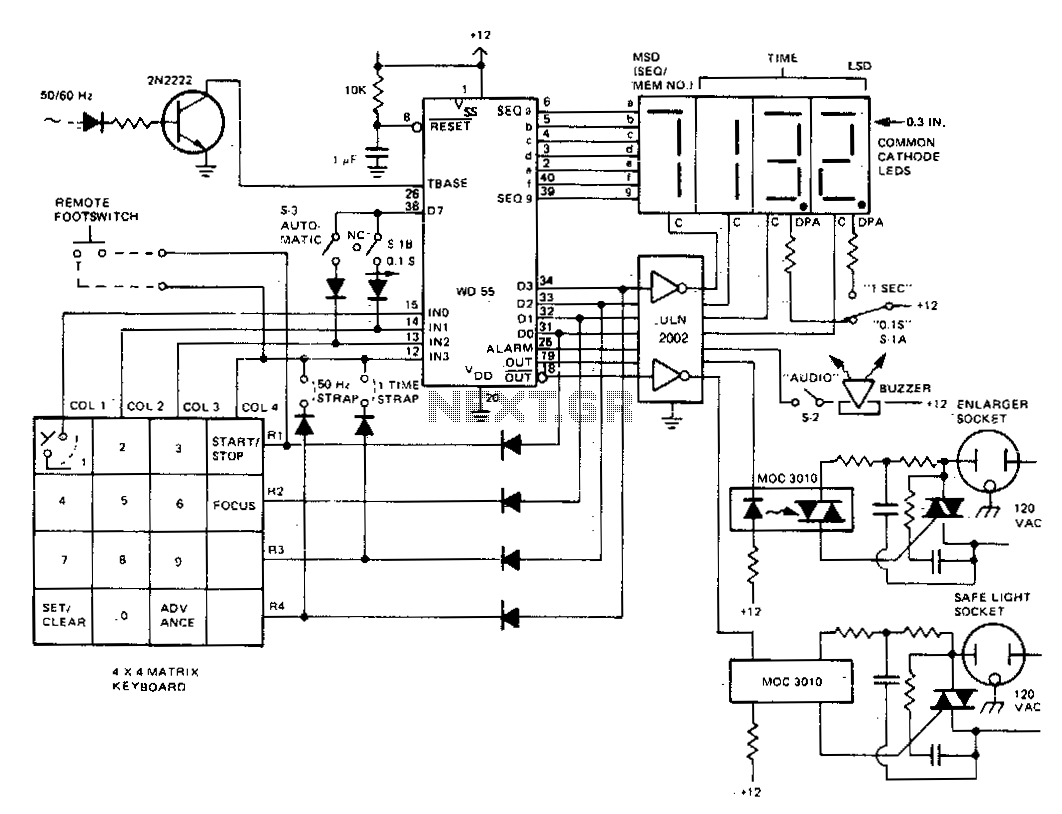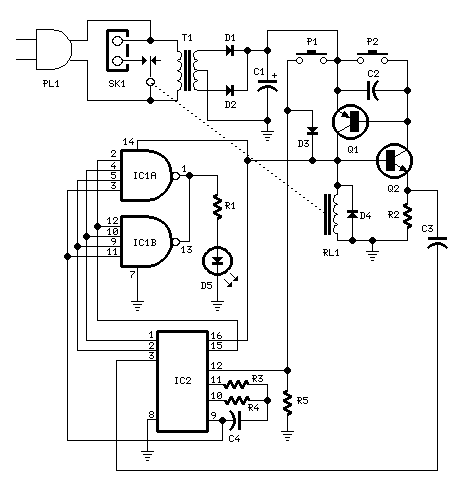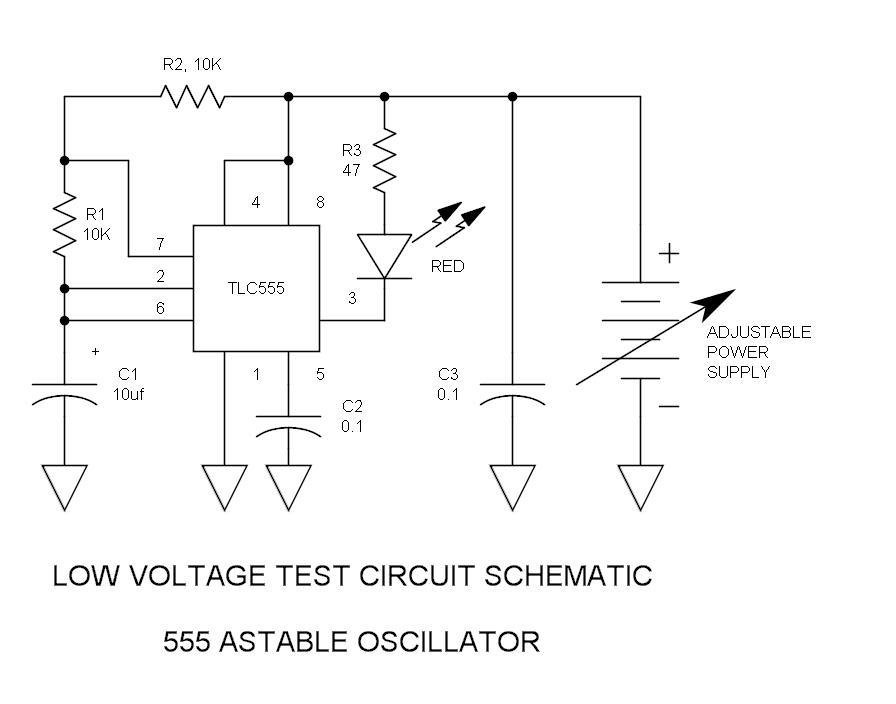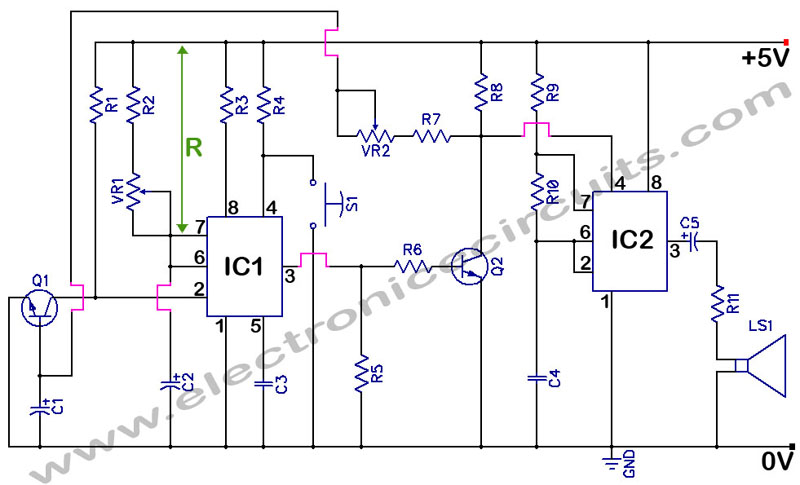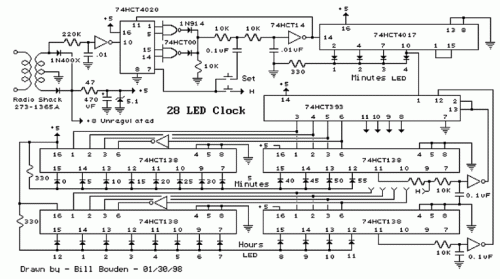
Headlights Timer
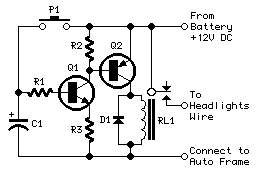
This device is a simple timer that allows the headlights of a vehicle to remain on for approximately 1 minute and 30 seconds. This feature is useful when accessing dark areas without the need to return to turn off the lights. Pressing switch P1 enables capacitor C1 to charge from the 12V battery supply. This charging activates transistor Q1, which in turn drives transistor Q2 and its associated relay load. The headlights are activated through a relay contact wired in parallel to the vehicle's headlight switch. Relay RL1 remains activated until capacitor C1 is nearly fully discharged, which occurs when its voltage drops below approximately 0.7V. An interesting variation of this design allows the interior lamp to serve as the command source for the timer. In this configuration, when the door is opened, capacitor C1 charges, but it begins to discharge only when the door is closed, eliminating the need for a pushbutton operation. To enable this functionality, the cathode of a 1N4002 diode should be connected to the junction of resistor R1 and capacitor C1, while the anode is connected to the "live" lead of the interior lamp.
The circuit operates by utilizing a simple timer mechanism that leverages a capacitor, transistors, and a relay to control the headlights. The core components include a 12V battery, a timing capacitor (C1), and two transistors (Q1 and Q2) that function as switches. When switch P1 is pressed, the circuit allows capacitor C1 to charge to the battery voltage. The charging process energizes transistor Q1, which subsequently activates transistor Q2. This activation closes the relay (RL1), allowing current to flow to the vehicle's headlights, thereby illuminating them for the preset duration.
The timer's duration is primarily determined by the discharge characteristics of capacitor C1, which is influenced by the values of the resistor (R1) in the circuit. The relay used (RL1) is capable of handling the current required by the headlights, ensuring reliable operation. As C1 discharges, the voltage across it decreases until it reaches the threshold voltage of approximately 0.7V, at which point the relay deactivates, turning off the headlights.
For the alternative configuration with the interior lamp, the diode (1N4002) plays a crucial role in controlling the timing operation. When the door is opened, the interior lamp provides a voltage that charges C1. The diode prevents C1 from discharging back through the lamp circuit when the door is closed, allowing the timer function to initiate. This modification enhances the convenience of the system by automating the headlight operation based on the vehicle's door status.
Overall, this timer circuit is an effective solution for managing vehicle headlights, providing both safety and convenience when navigating dark areas. Its simple design allows for easy integration into existing vehicle electrical systems, making it a practical enhancement for drivers.This device is a simple timer, allowing to keep on the headlights of your vehicle for about 1min. and 30sec. , e. g. when accessing some dark place, without the necessity of coming back to switch-off the lights. Pushing on P1 allows C1 charging to full 12V battery supply. Therefore Q1 is driven hard-on, driving in turn Q2 and its Relay load. The hea dlights are thus activated by means of the Relay contact wired in parallel to the vehicle`s headlights switch. RL1 remains activated until C1 is almost fully discharged, i. e. when its voltage falls below about 0. 7V. An interesting variation is to use the inside lamp as a command source for the timer. In this way, when the door is opened C1 is charged, but it will start to discharge only when the door will be closed, substituting pushbutton operation.
To enable the circuit acting in this way, simply connect the cathode of a 1N4002 diode to R1-C1 junction and the anode to the "live" lead of the inside lamp. 🔗 External reference
The circuit operates by utilizing a simple timer mechanism that leverages a capacitor, transistors, and a relay to control the headlights. The core components include a 12V battery, a timing capacitor (C1), and two transistors (Q1 and Q2) that function as switches. When switch P1 is pressed, the circuit allows capacitor C1 to charge to the battery voltage. The charging process energizes transistor Q1, which subsequently activates transistor Q2. This activation closes the relay (RL1), allowing current to flow to the vehicle's headlights, thereby illuminating them for the preset duration.
The timer's duration is primarily determined by the discharge characteristics of capacitor C1, which is influenced by the values of the resistor (R1) in the circuit. The relay used (RL1) is capable of handling the current required by the headlights, ensuring reliable operation. As C1 discharges, the voltage across it decreases until it reaches the threshold voltage of approximately 0.7V, at which point the relay deactivates, turning off the headlights.
For the alternative configuration with the interior lamp, the diode (1N4002) plays a crucial role in controlling the timing operation. When the door is opened, the interior lamp provides a voltage that charges C1. The diode prevents C1 from discharging back through the lamp circuit when the door is closed, allowing the timer function to initiate. This modification enhances the convenience of the system by automating the headlight operation based on the vehicle's door status.
Overall, this timer circuit is an effective solution for managing vehicle headlights, providing both safety and convenience when navigating dark areas. Its simple design allows for easy integration into existing vehicle electrical systems, making it a practical enhancement for drivers.This device is a simple timer, allowing to keep on the headlights of your vehicle for about 1min. and 30sec. , e. g. when accessing some dark place, without the necessity of coming back to switch-off the lights. Pushing on P1 allows C1 charging to full 12V battery supply. Therefore Q1 is driven hard-on, driving in turn Q2 and its Relay load. The hea dlights are thus activated by means of the Relay contact wired in parallel to the vehicle`s headlights switch. RL1 remains activated until C1 is almost fully discharged, i. e. when its voltage falls below about 0. 7V. An interesting variation is to use the inside lamp as a command source for the timer. In this way, when the door is opened C1 is charged, but it will start to discharge only when the door will be closed, substituting pushbutton operation.
To enable the circuit acting in this way, simply connect the cathode of a 1N4002 diode to R1-C1 junction and the anode to the "live" lead of the inside lamp. 🔗 External reference
